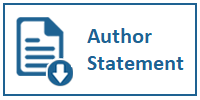Analisis Layanan Google Scholar Sebagai Bahan Referensi Terhadap Kepuasan Mahasiswa
DOI:
https://doi.org/10.31937/si.v10i1.1086Abstract
This study aim to determine the factors that influence Google Scholar services on college students use the IS Success Model. There are five developed constructs of Technology Acceptance Model consist of network externality, information quality, system quality, service quality and satisfaction. The study is causality using survey approach. The amount of respondents sample is 224 respondents from STMIK Widuri college students. The method of data analysis uses path analysis with sobet tests. The results of this research showed that: (1) network externality have a positive direct effect on the each construct of the IS Success Model is information quality, system quality and service quality; (2) merely system quality has a positive direct effect on the satisfaction college students; and (3) in addition, merely network externality also has a positive indirect effect on the satisfaction college students through system quality.
Downloads
Downloads
Published
How to Cite
Issue
Section
License
Authors retain copyright and grant the journal right of first publication with the work simultaneously licensed under a Creative Commons Attribution-ShareAlike International License (CC-BY-SA 4.0) that allows others to share the work with an acknowledgement of the work's authorship and initial publication in this journal.
Authors are able to enter into separate, additional contractual arrangements for the non-exclusive distribution of the journal's published version of the work (e.g., post it to an institutional repository or publish it in a book), with an acknowledgement of its initial publication in this journal.
Copyright without Restrictions
The journal allows the author(s) to hold the copyright without restrictions and will retain publishing rights without restrictions.
The submitted papers are assumed to contain no proprietary material unprotected by patent or patent application; responsibility for technical content and for protection of proprietary material rests solely with the author(s) and their organizations and is not the responsibility of the ULTIMA InfoSys or its Editorial Staff. The main (first/corresponding) author is responsible for ensuring that the article has been seen and approved by all the other authors. It is the responsibility of the author to obtain all necessary copyright release permissions for the use of any copyrighted materials in the manuscript prior to the submission.















